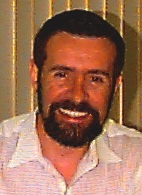
Please Note: The content on this page is not maintained after the colloquium event is completed. As such, some links may no longer be functional.
Jean-Bernard Minster 
Prediction of Large Ground Motion Amplitudes in Los Angeles for an Earthquake on the Southern Segment of the San Andreas Fault
Wednesday, October 25, 2006
Building 3 Auditorium - 3:30 PM
(Refreshments at 3:00 PM)
Jean-Bernard Minster, will talk about Prediction of Large Ground Motion Amplitudes in Los Angeles for an Earthquake on the Southern Segment of the San Andreas Fault. There exists a strong probability that the southern segment of the San Andreas Fault in California will be the site of a large (M>7.5) earthquake in the next few decades. The last such earthquake is dated at 1690 and paleoseismic data show a recurrence interval of about 200 years. In the absence of seismic risks for such an event I will present results of the “TeraShake” platform project, which involved a team of about 40 domain and IT scientists, representing about 10 research institutions.
The simulations have been performed on the Teragrid network, and on the DataStar machine at the San Diego SuperComputer Center (SDSC). We have used up to 2,000 processors and show good scaling to that level, using the MPI environment. We are currently executing scaling runs to 9,000 processors, and planning for 40,000 processor runs on the BlueGene machine. In the longer term (2-3 years) we anticipate to scale these runs to up to 250-500K processors. At the present time, each run generates as much at 50 TBytes of output, which is a challenge in and of itself.
A notable scientific result is that the chain of sedimentary basins that borders the waveguide that concentrates Love waves and creates extreme amplitudes in downtown Los Angeles as shown in the illustration below. However, rupture complexity is an important factor, which can lead to amplitude changes by a factor of five. Simple ruptures- ie coherent ruptures – tend to generate much larger amplitudes that complex ones. In addition the directivity associated with the direction of rupture propagation exerts an enormous influence on the regions of energy focalization, which is not a surprise to seismologists, but has not heretofore been estimated quantitatively.

J. Bernard Minster is a professor of Geophysics at the Institute of Geophysics and Planetary Physics (IGPP) of the Scripps Institution of Oceanography, University of California, San Diego, and senior fellow at the San Diego Supercomputer Center. For the past year he has been the Chair of the UCSD Division of the University of California Academic Senate. Dr. Minster's research interests are centered on the determination of the structure of the Earth's interior from broad-band seismic data, by imaging the Earth's upper mantle and crust using seismic waves. This research has led him to an involvement in the use of seismic means for verification of nuclear test ban treaties. He has long been interested in global tectonic problems and in the application of space-geodetic techniques, including synthetic aperture radar (SAR) and laser altimetry, to study tectonic and volcanic deformations of the earth's crust by airborne and spaceborne remote sensing. He is a member of the ICESat science team, which uses the GLAS instrument to measure ice-sheet mass balance and global topographic change. He has been Principal Investigator on several proposed SAR missions in low Earth orbit, and on a proposed laser altimetry mission to Europa. More recently he has led major efforts toward estimating the effects of very large earthquakes in southern California, using supercomputer simulations, and analyzing paleoseismic data using hyperspectral imaging. He has held positions in industry and has been a consultant and reviewer for numerous companies. He was the Nordberg Lecturer at NASA/GSFC in 1996 and was elected a Fellow of the American Geophysical Union in 1990. He is the chair of the recently created Earth and Space Science Informatics focus group of the American Geophysical Union. Dr. Minster has chaired previous National Research Council committees, including the Committee on Geophysical and Environmental Data and has served on numerous committees related to solid earth geophysics, including the Board on Earth Sciences and Resources and its Committee on Geodesy. He is currently vice-chair of the World Data Center (WDC) Panel of the International Council of Scientific Unions (ICSU).
IS&T Colloquium Committee Host: Jacqueline Le Moigne
